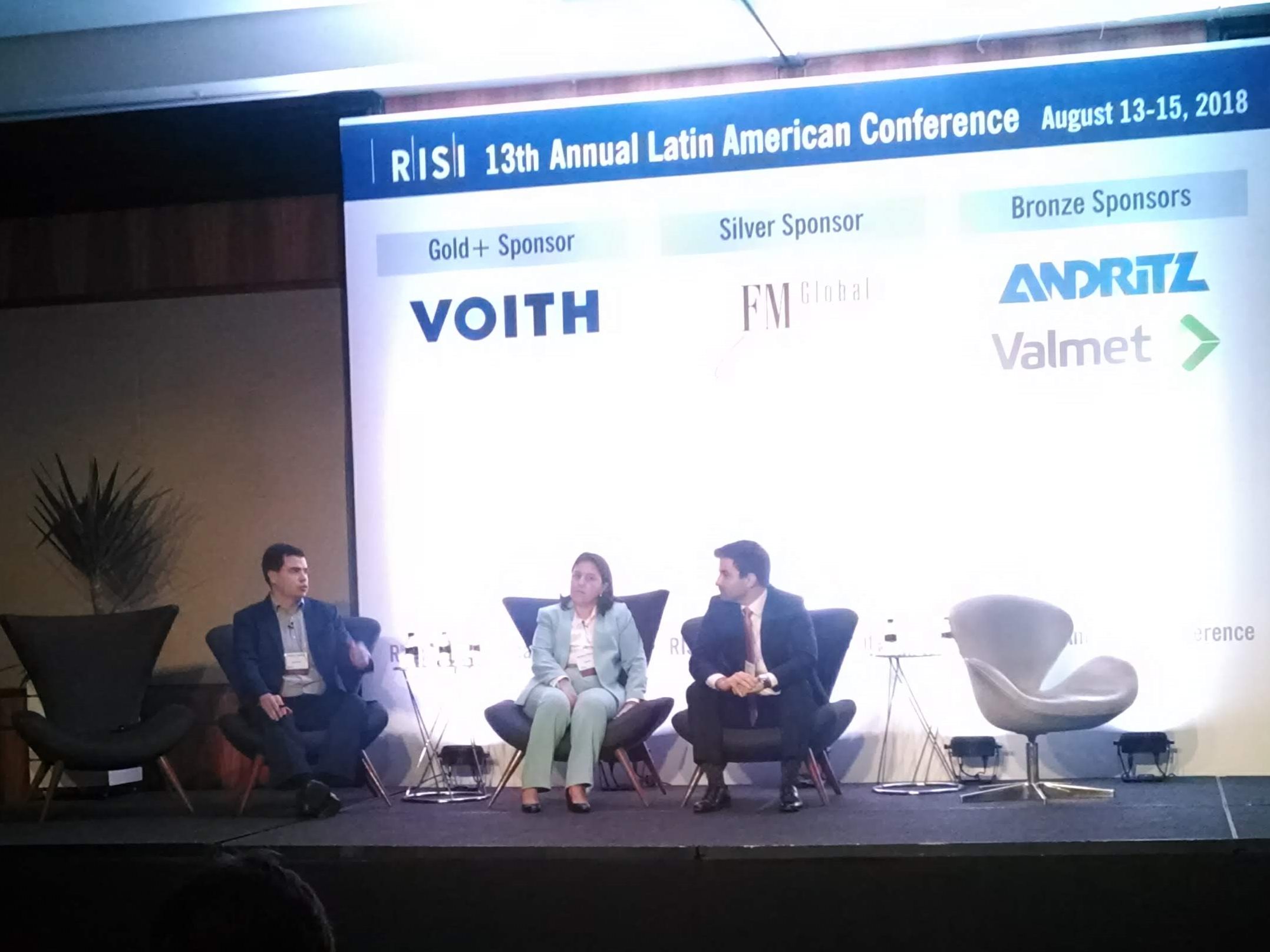Mais um ano com a Risi, e 2018 foi um grande sucesso de público. Confira as fotos:







Mais informações, preencha o formulário abaixo.

Mais um ano com a Risi, e 2018 foi um grande sucesso de público. Confira as fotos:







Mais informações, preencha o formulário abaixo.


Até o dia 29 de junho você pode fazer sua inscrição no valor de USD 1.195,00. Clique neste link e garanta já sua inscrição.
Se mais de um profissional de sua empresa participarão do evento, descontos progressivos poderão ser aplicados. Confira a tabela abaixo.
| Número de inscrições | 1 pass | 2 passes | 3 passes | 4 passes | 5 passes |
| RISI Latin American Conference Early Bird Price | $ 1.195,00 | $ 1.075,50 | $ 1.015,75 | $ 956,00 | $ 896,25 |
| RISI Latin American Confernece (Depois de 29 de junho, 2018) | $ 1.550,00 | $ 1.395,00 | $ 1.317,50 | $ 1.240,00 | $ 1.162,50 |
EDITOR, PPI LATIN AMERICA
RISI
A briefing on the potential impact of the upcoming elections in Brazil, Colombia and Argentina, on business, regulation and incoming legislations.
DIRECTOR MACROECONOMICS
RISI
An economic outlook looking at key disruptors and predictions for the global economy, the regional Latin American economy and business during the next 12-18 months.
In addition to traditional Q&A we will use this time to have an interactive discussion on the recent presentations.
Moody’s Latin America
JP Morgan
CEO
Suzano Pulp and Paper
VICE PRESIDENT, FIBER
RISI
Underlying demand for market pulp continues to trend steadily higher while supply disruptions combine with aggressive environmental policies in China are keeping markets tight and adding increased uncertainty and volatility to global fiber markets. This presentation will review current market dynamics and outline RISI’s outlook for global market pulp.
HEAD OF SOUTH AMERICA COMMERCIAL & MARKETING
Eldorado Celulose e Papel
In addition to traditional Q&A we will use this time to have an interactive discussion on the recent presentations.
PRINCIPAL, TISSUE
RISI
ASSOCIATE ECONOMIST, PULP
RISI
Damapel
Indaial Papel
Milli
In addition to traditional Q&A we will use this time to have an interactive discussion on the recent presentations.
CMPC
Fibria
Suzano Pulp and Paper
Klabin
What will be the impact of the consolidation in the market?
Integrated convertors. What impact is the consolidation, and integration of producers and suppliers, having on the whole value chain? What happens when the boom subsides?
Pricing Power in a rising pulp price environment. What will be the next major disruption?
Adapting to Disruptions in the Market:
Are there any plans for capacity expansion? What is the new frontier for the pulp industry?
ECONOMIST
RISI
Trombini
JBS
WestRock
Embalagens Jaguare
Nestrade (Nestle)
In addition to traditional Q&A we will use this time to have an interactive discussion on the recent presentations.
PARTNER
Agroforestal Oberá
RISI
RISI
Asian pulp and paper companies imported nearly 25 million BDMT of woodchips in 2017, enough to produce more than 12 million tonnes of wood pulp. But a combination of issues in the major woodchip supplying countries will result in a shortage of several million tonnes of woodchips relative to Asian market demand. This will mean that either new sources of woodchip supply will be developed, and/or the market will require imports of additional market pulp from overseas. This presentation will discuss:
An opportunity for smaller players or providers of new technologies to showcase their innovation.
CFO
Smurfit Kappa Colombia
This presentation looks beyond the main market players to present what other nations in Latin America are doing to grow the paper and pulp industry nationally and thereby increase their presence in the wider Latin American market.
In addition to traditional Q&A we will use this time to have an interactive discussion on the recent presentations.
VICE PRESIDENT, GRAPHIC PAPERS
RISI
Latin America has struggled with declining demand, rising imports and increasing barriers to international trade. Despite being a very low cost region, investment in new supply has been minimal, and some mills have shut. With demand now starting to recover in certain markets, could the recent course of the industry be reversed? How will the ongoing Asian investment in new supply limit opportunities for Latin American producers? Will trade barriers expand to other regions?
ASSOCIATE PROFESSOR
University of Texas at Austin
Following the report commissioned WAN-IFRA, this will present the consumer usage trends for digital content to printed content.
RISI
Ibá
Suzano Pulp and Paper
ABIGRAF
You have done your research, you know the technology available, and you may have even started implementing it. But what can you do now to ensure that it is implemented correctly? Case Studies of best practices and lessons learnt from industry leaders who have begun the process of becoming fully digital.
Entre em contato conosco:
 WhatsApp
WhatsApp